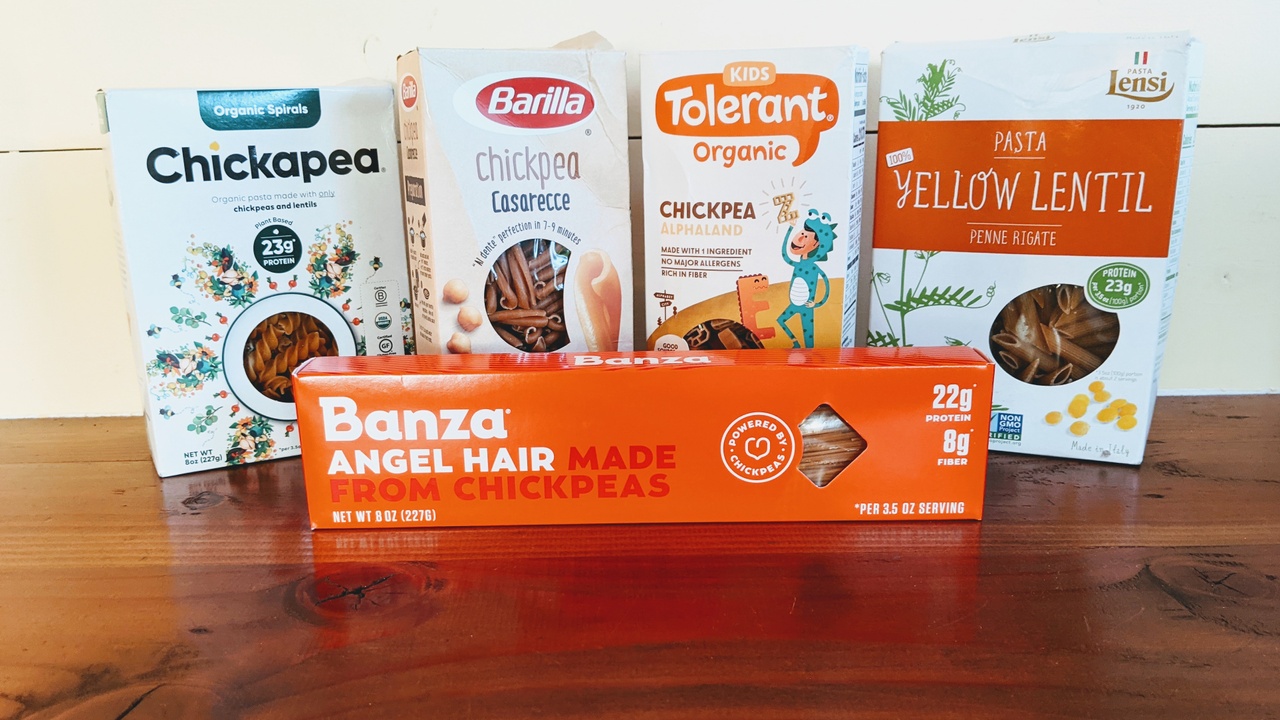The Scoop on Bean Pastas

There’s exciting news for pasta lovers – especially those that have shunned pasta for health reasons. A new kind of pasta, readily available in your grocery aisle, is making waves for the right reasons – it doesn't raise blood sugar as much as wheat pasta, it’s not inflammatory and it’s gluten-free.
We’re talking about the wide variety of bean pastas - chickpea, lentil, black bean, edamame, to name just a few. While the main ingredient is different, the shape, some of the flavor and sometimes even the texture mimics traditional pasta quite nicely.
Why we love bean pastas
Bean pastas are made by turning dried beans and legumes into fine flour, adding water to the bean flour to make dough, which is then kneaded and made into pasta.
To enjoy the many health benefits of bean pastas, be sure the only ingredients in the ingredient list are the name(s) of beans or bean flours. Examples: chickpeas or chickpea flour; red lentils or red lentil flour.
While a healthy pasta choice, it’s best to treat these as a 25% zone food because they are heavily processed and calorie dense.
Reasons to love bean pastas:
- They use whole beans with all their fiber, protein, vitamins, minerals and phytochemicals
- They're higher in protein and fiber than wheat and rice pastas
- They’re gluten-free
- They’re wheat-free
- They’re cholesterol free
- They’re a fun way to enjoy beans that makes you think you’re eating traditional pasta
The secret to achieving the best texture and flavor of bean pastas is to cook them in a generous amount of water, not al dente, but a little longer until soft, followed by rinsing well in a colander before using them.
Our Favorite Bean Pastas

Take it from your Full Plate Living team on bean pastas they’ve tried and liked. Here are a few of our favorites.
Barilla makes three different chickpea pastas and three different red lentil pastas.
Chickapea makes seven different pasta shapes from a combination of three different organic bean flours: chickpea, yellow and red lentil. Three of those shapes are also made with the addition of greens in the form of organic kale and spinach powders.
Tolerant makes three different pastas from organic green lentil flour, two different from organic red lentil flour, two from organic chickpea flour and three different kid-friendly pastas.
Lensi is an Italian company that produces three different chickpea pastas, two black bean, two yellow lentil, five red lentil and one green pea.
**Banza is a very popular brand of chickpea pastas. While chickpeas are the first ingredient, a very small amount of tapioca, pea starch and xanthan gum are used to help give these pastas a texture similar to traditional durum wheat pastas.
What about traditional pastas on the Full Plate Living Approach?
Traditional pastas are made from a type of spring wheat – durum wheat or semolina wheat, which is just coarser ground durum wheat.
Durum or semolina wheat are not whole grain wheat, meaning the bran and germ are removed during processing resulting in the loss of most of the fiber and large amounts of vitamins, minerals, antioxidants and phytochemicals. What remains is concentrated starch without fiber and a high gluten content.
When using the Full Plate Living 75/25 Plate approach, we recommend treating ALL pasta as a 25% zone choice because there has been a lot of processing to get them in those shapes. :) Remember to enjoy your pasta meals by piling on a couple servings of veggies, like steamed broccoli and roasted Brussels sprouts, and then finish off the meal with a fruit salad.
What about 100% whole wheat pasta or 100% brown rice pasta? All the fiber and nutrients are there so they should be 75% plate foods, right?
Even though all the nutrients are retained, we consider whole grain pastas as 25% plate foods for this reason: whole grains are ground into fine particles of flour when they are made into pasta. That means you get much more concentrated amounts of starch when you eat cooked whole grain pasta than when you eat a cooked whole grain, like brown rice or steel-cut oats in their whole form. Too much concentrated starch can be an unhealthy choice for those trying to lose weight or manage blood sugars, so making whole grain pastas 25% plate options helps to limit the amount eaten.
Full Plate Living is a small-step approach with big health outcomes. It's provided as a free service of Ardmore Institute of Health.

